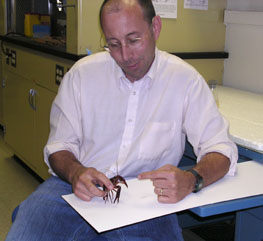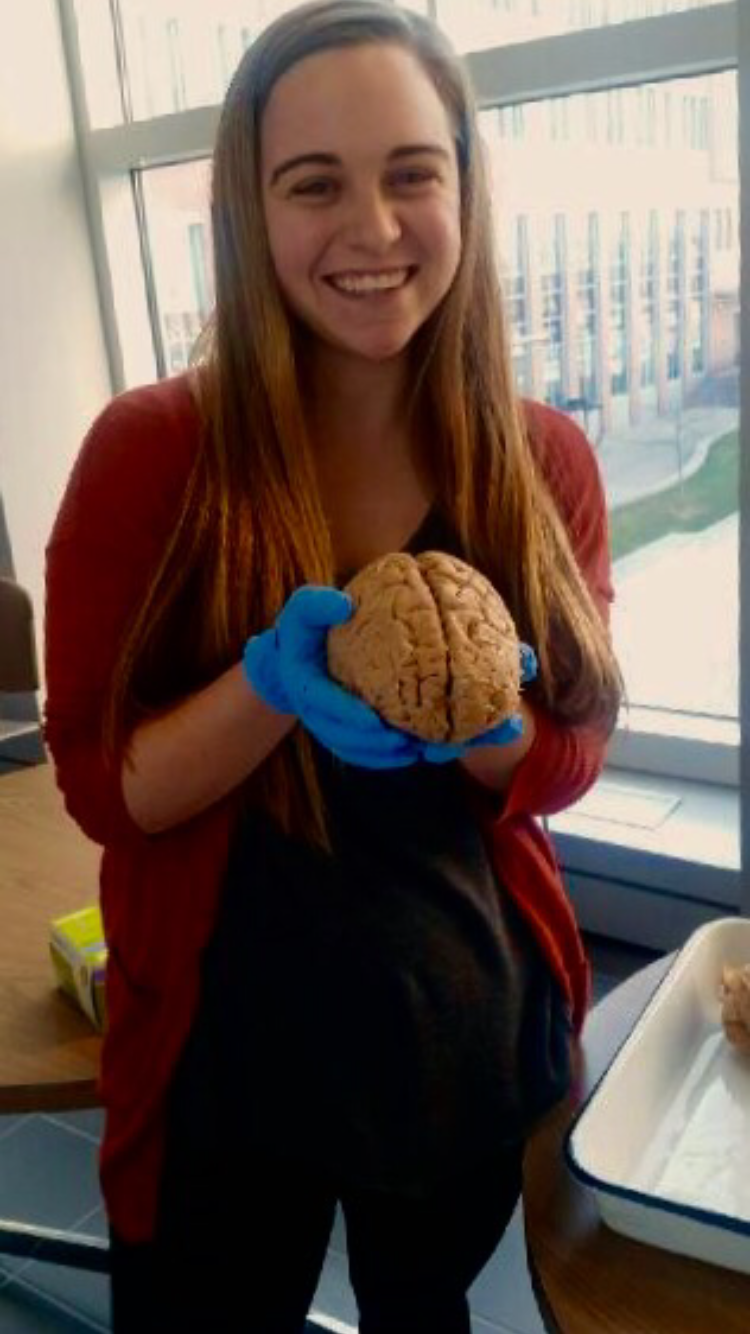
RLCOOP1@email.uky.edu
Office: Biology, rm 226
Tel: 257-5950
Office Hours: email for appt.
WWW Home page (go to)

Alex Stanback
work together

| Back to Home Page |
Bio 446 / Bio650 Neurophysiology Lab Fall 2018 Tuesday - 1:00 to 2:15 PM Lecture |
||
|
Fall 2018:
|
|||
|
|
||||||||||
| Instructor: | TA: | |||||||||
 |
Dr.
Robin L. Cooper RLCOOP1@email.uky.edu Office: Biology, rm 226 Tel: 257-5950 Office Hours: email for appt. WWW Home page (go to) |
Alex Stanback |
|
work together
|
||||||
|
|
||||
| Jump to on this page: |
Course outline (go to) |
Course schedule & experiments (go to) | ||
|
|
||||
|
Development of the course: Cooper, R.L., Titlow, J. and Majeed, Z.R. (2012). Introduction of a new neurophysiology laboratory for students at the University of Kentucky. Annual Meeting of Society for Neuroscience. New Orleans, LA., USA. (ppt) Why comparative neurophysiology is of interest [ pdf ] FREE
NEUROPHYSIOLOGY TEXT BOOK ON LINE (use for a review of basic concepts) Free background information on neuron morphology, conducting electrical, ionic bases of resting & action potential, and Synapse structure Links
for info: These journals offer you some topics that might be of interest to you for the course. Note--you have to be on a UK computer for full access to the papers for some of the journals. |
|
|
|||
|
Presentation schedule & topics:
Alex - The action of TEA and 4-AP on the PD organ - 09/13/2018. Alex -on Kentogenic diet and synaptic transmission - 09/20/2018 Maddie - The action of LPS on the MRO - Oct 4, 2018. Class Photos..... 300 MB file MS word.
>>>>>>>>>>>>>>>>>>>> TOPICS
AND READINGS-TENTATIVE SCHEDULE Week, Topics, Student-driven In-class Activities Week 1: Learn about equipment (extracellular & intracellular amps, microscopes, electrode puller). Solutions and laboratory tools. Animal care. Lab notebooks & reports. - We will start on the bread board to learn about OHM's law and electrical conduction .................................(see this lab Page- Neuron model ) Week 2: - Learn to record from proprioceptors (extracellular) in the crab leg and relate to joint positions. Research paper discussion. (see this lab PAGE- Joint receptors in a crab) (also how to move leg ... movie by Maddie) (Here....MPEG or window media) Week 3: - Crayfish - proprioception. The MRO preparation (Lab web page)(also how to move segment ... movie by Alex) (Here....MPEG or window media) For class projects and publications - Articles and resources Week 4: Might still be working on MRO amd PD organs. But, if finished then we start intracellular recordings. - Measure membrane potentials in crayfish abdomen muscles and plot Rp vs [Na]o graphs and Rp vs [K]o graphs. (see this lab PAGE- RP, K, Na) Making a cheap electrode holder (500 mB movie file from an IPHONE- need to download and then watch. Also on YOUTUBE https://www.youtube.com/watch?v=7FFNriDjLc0) ... helpful material 2 slides on a ppt or the PDF ? , 2017 Midterm exam will be posted here Week 5: - Measure facilitation and depression in tonic and phasic neuromuscular junctions in crayfish abdomen muscles. We will learn how to stimulate motor nerves and record EPSPs/IPSPs. (see this lab PAGE- EPSPs) - Quantal analysis of synaptic transmission: Crayfish NMJ record quantal responses..(see this lab PAGE- quantal analysis ) - 5-HT action on NMJ model page 68 or 53 of document --Wu's dissertation)
Power point on optogenetics PPT, Blank data sheet (MS word)........ Everyone's data sheets (PDF) Introduction to the leech nevous system: Titlow, J., Majeed, Z.R., Nicholls, J.G. and Cooper, R.L. (2013) Identifiable neurons in the central nervous system of a leech via electrophysiology and morphology, sensory field maps in skin and synapse formation in culture: Student laboratory exercises. Journal of Visualized Experiments (JoVE). (81), e50631, doi:10.3791/50631. http://www.jove.com/video/50631/intracellular-recording-sensory-field-mapping-culturing-identified Learn how to dissect the leech ventral nerve cord and obtain intracellular recordings from identified neurons. Current injections and threshold measures. Record in situ synaptic connections. Investigate the ionic currents making up the action potentials. (see this lab PAGE- Leech ganglion lab) So cool brain circuits : https://www.youtube.com/watch?time_continue=44&v=Pn4dksaAvok -Mapping skin receptive fields on the leech while recording from neurons. Dye fills. (see this lab PAGE- Leech Skin lab) - Learn how to forward fill neurons from the crab leg proprioceptors (CoCl2, 4-Di-2 ASP) as well as stain with methylene blue. (see this lab PAGE- Staining of Joint receptors in a crab)
- Learn to record from
tension receptors in the crab leg related to muscle length and contraction
as well as human muscle EMG. (see
this lab PAGE- tension
nerve recordings) - EEG Human lab (go to lab EEG lab page) - Earthworm preparation to learn about conduction velocity and refractory periods ................................(see this lab Page- Earth worm experiments) - Introduction to the leech nevous system and practice dissection. Staining of leech ganglia. - Learn how to remove and culture leech neurons for forming synapses in culture. (see this lab PAGE- Leech neuron culture lab) -Catch up on experiments and analysis day. Graph data, catch up on homework and literature gathering. Plot I V curves and use Ohms law to determine Rm with crayfish skeletal muscle. Sensory recordings from the cockroach cerci. (see this lab PAGE- cockroach cerci ) Vision: crayfish caudal photo receptor in crayfish. ..................(see this lab PAGE- Crayfish photoreceptors lab) No class. Work on your own out of lab for write ups. - Make up any labs needed. Make sure lab report is going along OK. Pass out take home exam.(Exam 2) - (Finals week) Turn in final exam and reports. |
|||
|
|||
| Back to TOP |